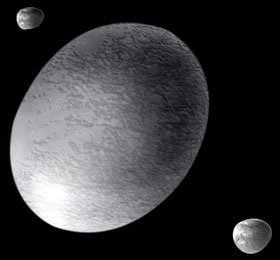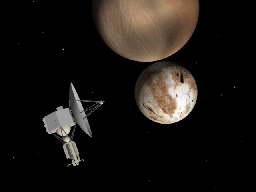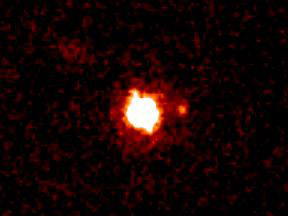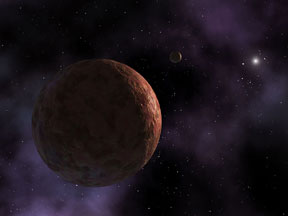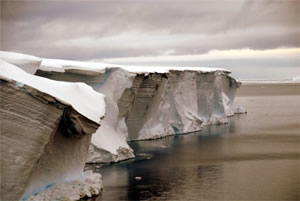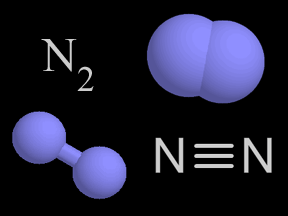Click on image for full size
Images courtesy of NASA, ESA, and A. Feild (STScI).
The Poles of the Dwarf Planets
As of June 2009 there are officially five dwarf planets. They are Pluto, Ceres, Eris, Haumea and Makemake.
Pluto, Eris, Haumea and Makemake orbit far from the Sun. That makes them very, very cold places. They are even colder than the North and South Poles on Earth. The interiors of planets like Earth and Mars are made of rock. The interiors of Pluto, Eris, Haumea and Makemake are made of ice instead. Their surfaces are also covered with ice.
It is so cold on these dwarf planets that even the "air" freezes. The ice on the surface isn't just normal ice made of water. Pluto's surface has ice made of nitrogen and smaller amounts of methane, carbon monoxide, and maybe ethane ices. The surface of Makemake is coated with methane, ethane, and maybe nitrogen ices. Astronomers found methane ice on the surface of Eris. On Earth at "normal" temperatures, nitrogen, methane, carbon monoxide, and ethane are all gases. On these cold dwarf planets, the gases freeze and turn into solid ice! Haumea is a bit different. It is covered with water ice. Its surface is as bright as snow.
Ceres is the other dwarf planet. It orbits much closer to the Sun in the main asteroid belt between Mars and Jupiter. Its surface is rocky. However, some scientists think that inside it might be partly ice. They think that about one quarter of Ceres might be ice (the rest is rock).
What are the poles of the dwarf planets like? We don't know much, since most of them are so far away and hard to see even with big telescopes. We can't see Makemake, Haumea and Eris well enough to tell whether they are tilted or not. Pluto is tilted a lot, about 120°. It is basically lying down, with its poles on its sides. Ceres is only tilted 3°. Its poles are almost perfectly straight up and down.
Haumea spins really fast. A "day" there only lasts about 4 hours. The fast spin makes Haumea bulge out at the equator and squash down at the poles. The diameter of Haumea at its equator is as much as 2,000 km. However, from Haumea's North Pole to its South Pole its diameter is only about 1,000 km. That is only half as far!


